The Toyota Prius hybrid gets all the press – and a lot of the dealer mark-up, too. You might check out the new Camry hybrid to get something very similar – and nicer, in a number of ways – for about the same money. 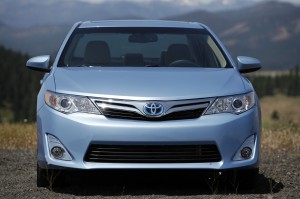
Probably less, actually – since you should be able to haggle and so avoid paying full MSRP. Unlike with the Prius – whose popularity has made it pretty pricey.
At least, until word gets out about how good this new Camry hybrid is.
WHAT IT IS
The hybrid Camry is a Camry with a tandem gas-electric powertrain instead of the regular Camry’s IC-only powertrain. Otherwise, it’s the same mid-sized, FWD sedan as the regular Camry.
Oh, there’s price.
The hybrid starts at $25,900 vs. $21,955 for the base model (non-hybrid) Camry L – so it’s more expensive than a regular Camry. But in addition to the hybrid drivetrain (which also gives you much better gas mileage) the base hybrid Camry comes with the same upgraded equipment package as the non-hybrid Camry LE – which starts at $22,500. That means you get a touchscreen interface, remote keyless entry and power locks – stuff that’s not included with the $21,955 base model (non-hybrid) Camry L.
Plus, 43 MPG (or more) in city driving – the best you’ll find on four wheels that’s not a Prius.
The Camry hybrid’s main competitors are the hybrid versions of the Hyundai Sonata ($25,795 to start) and Ford Fusion ($28,775 to start).
The Camry – hybrid and regular – has been significantly updated for the new model year. The hybrid version is more powerful (and a lot quicker) and gets much better mileage than previously.
Also, the handling/ride has been tightened up. It’s not a BMW – but it’s no longer a reincarnated ’87 Buick Century, either.
WHAT’S GOOD
43 city/39 highway – best in class – and 8 MPG better than Hyundai Sonata hybrid in the city.
Quick now (0-60 in about 7.5 seconds). Much quicker than a Prius (about 11 seconds, given’ ‘er all she’s got, capn’!)
Plush – seats, ride and room.
About $2,900 less to start than Ford Fusion hybrid – and 3 MPG better on the highway.
WHAT’S NOT SO GOOD
Higher up-front costs vs. non-hybrid equivalent. Like all hybrids. Your payoff comes at the pump – and down the road.
Possibly higher down-the road maintenance/repair costs due to additional (and complex) hybrid components. As is true of all hybrids.
The new Camry hybrid is stronger and faster than before – but even better, it’s also more efficient.
A lot more efficient.
Relative to last year – and relative to the competition.
There’s a larger, stronger 2.5 liter gas engine (vs. 2.4 liters previously) under the hood which, with the boost it gets on demand from the electric motor/battery pack, bumps the total output to 200 hp (vs. 187 in 2011). This’ll get the ’12 Camry hybrid to 60 in about 7.4-7.5 seconds, a full second quicker than the 2011 Camry hybrid and the current hybrid versions of the Sonata and Fusion.
So, the Camry hybrid’s the hot rod of the bunch.
But it’s also the easiest on gas of the bunch: 43 city, 39 highway. This is a huge improvement over last year, when the hybrid Camry only managed 33 city, 34 highway.
It’s also better than the Ford Fusion hybrid (41 city, 36 highway) and the Hyundai Sonata hybrid (35 city, 40 highway). Take note especially of the Camry’s 8 MPG advantage over the Sonata in city driving. These two cars are priced very close to one another. But at $4 per gallon, an eight MPG difference is a big difference.
The 3 MPG advantage the Camry has over the Ford Fusion on the highway – and the 2 MPG lead it has around town – is only a bit above negligible. But the price difference to start between these two cars is not. The Ford starts about $2,900 higher than the Hyundai. And $2,900 will buy around 725 gallons of gas at the current $4 or so a gallon – enough fuel to take you about 26,000 miles at 35-36 MPG (about what these cars average). Looked at another way, if you buy the Camry hybrid over the Fusion hybrid, you get to drive for free for 26,000 or so miles – which for most people is about 2-3 years’ worth of driving. 
A CVT transmission is standard – and you can operate the Camry hybrid entirely in electric mode up to about 30 MPH. However, in real-world driving, this is hard to do without being very patient – and expecting a great deal of patience from your fellow drivers. (More on this below.)
Buyers note: If you want that 43 MPG be aware that the higher trim XLE’s mileage is lower (40 city, 38 highway) because it’s fitted with higher rolling resistance 17-inch wheels and tires. The base trim comes with 16 inch wheels and tires – which in addition to saving you gas will save you money when the time comes to buy new tires.
ON THE ROAD
I’ve driven all the current cars in this class and – by far – the Camry hybrid’s the best of the bunch. Here’s why:
It is significantly quicker, both getting going and once you’re going. The Fusion and Sonata hybrids need 1 full second longer to accelerate to 60 – and it’s more than just that. The Camry hybrid has a margin those cars lack. What I mean is, to even make it to 60 in less than 9 seconds in the Fusion or Sonata hybrids, you have to floor it – and hold it – and wring every hp (and kilowatt) out of the thing. The Camry not only gets up to speed more rapidly, it does so with less effort. It is the first hybrid car I have driven (other than much more expensive luxury-performance hybrids like the Infiniti M or Porsche Cayenne) that is quicker than most non-hybrid economy cars. In fact, it’s about as quick as most middle-of-the-road cars – and certainly not slow (like the Prius).
Two, it is more seamless in operation. 
Others have commented on the noticeable transitions between electric and gas and electric-assisted operation in other hybrids, including the Sonata hybrid especially. Toyota’s experience with hybrids – it was the first automaker to offer them for sale more than a decade ago – and it still sells far more of them than any other automaker – is telling. The regular Sonata is an outstanding car, pick of the litter in its class. But the hybrid version needs some more tweaking.
And the Fusion? It is a smooth runner – better than the Sonata and almost as good as the Camry. But it’s an older design and doesn’t transition quite as smoothly and often feels like it’s working to hard to get up to speed. But its real deficit is its MSRP. The 2012 Fusion hybrid’s base price of $28,775 is $1,375 higher than the price of the top-of-the-line Camry XLE hybrid ($27,400) and almost $2,900 higher than the price of a 43 MPG hybrid Camry LE.
Third: The Camry hybrid is (by far) the plushest of the three. Several people I took for rides commented on the back (and tail) friendly seats; the generous backseat legroom and headroom, the giving, compliant ride. It’s true Toyota has firmed the new Camry up relative to the previous one, but the difference is a less disconnected feel – not a harsher ride. The steering, for instance, is no longer numb and overboosted and while cornering at high speeds is not what the Camry was built for, it does not wallow and heave like an ’87 Century, casting off hubcaps at each apex.
It displayed no negative traits at all during my weeklong test drive – and that’s the first time I’ve ever been able to say that about any hybrid. You do not have to drive this thing at a crawl to get extremely good economy out of it – I never got less than 35 MPG – and unlike a Prius, it will move when you need it to. 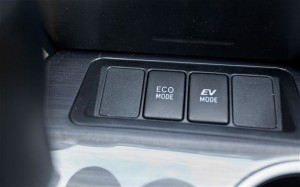
On the electric-only operation: There’s a button on the forward part of the lower console for EV – electric vehicle – mode. Engage this and it’s possible to drive the Prius at speeds up to about 30 MPH on just the batteries. But you have to be really gentle with your right foot. Anything more urgent than a crawl and an extremely gradual building of speed will trip the gas engine back on. This feature may however be more real-world usable in heavy city traffic – where you might not be able to move much faster than a crawl and – key thing – neither will anyone else around you.
So they won’t get mad at you.
For most normal real-world driving, the ECO button to the left of EV is the better choice. It maximizes the drivetrain for best economy but without requiring you to drive on eggshells or causing you to annoy your fellow motorists.
AT THE CURB
If you’re after attention, forget it. The clear choice on that score is the porpoise-sleek Sonata.
Aesthetically, the Camry is closer to the Fusion – both cars are neither ugly nor striking. They’re four-wheeled sensible shoes. Not many people will notice what you’re “wearing” – but they make you feel good. 
The exterior styling tweaks for 2012 are very subtle: A different shape for the driving lights in the lower grille; some nips and tucks here and there. Most are hard to notice unless you park a ’12 next to an ’11. If you liked the ’11, you’ll be happy with the appearance of the ’12.
The dash has a hybrid specific layout that’s different than the standard Camry’s – including a tachometer-like readout on the left that indicates when you’re charging (or draining) the batteries, with what I’ll call an intelligent mileage minder on the right-hand side. Unlike the typical (and absurd) mileage indicators you find in many new cars that will show 70, 80, even 100 MPG if you let off the gas and coast (because they’re just fancy vacuum gauges and engine vacuum is at its highest when the throttle is closed) the Camry’s gives you a realistic, real-time idea of the gas mileage you’re getting.
In between the main two gauges is a small LCD info center that can be toggled through several displays, including a Prius-like graphic that shows the flow and transition between all-engine operation, all-electric operation and variations in between. 
A neat feature is Toyota’s new Entune technology – part of the optional audio system. It includes a Bing search engine that works through your Smartphone and lets you access real-time traffic and weather updates and current stock market info. You can even use it to make dinner reservations or order tickets for concerts and so on.
I’ve mentioned the seats already. But let me add a qualifier about the rear seats. One of the striking differences between the Camry hybrid and the Sonata hybrid is the distribution of real estate. The Hyundai favors the driver and front seat passenger with 45.5 inches of legroom – which to give you some perspective is nearly four inches more front seat legroom than you’ll find up front in a full-size (and $90k) Mercedes S-Class sedan (41.9 inches). It’s also nearly four inches more than in the Camry (41.6 inches). But the Hyundai’s up-front roominess comes at a steep cost – to be paid by the backseat occupants. They’ll assume the fetal position – knees to chest, up against the front seatbacks – because there’s only 34.6 inches of backseat legroom. This is 4.3 inches less legroom than in the Camry – a huge difference, at least for those riding back there.
As with gas mileage (the Hyundai’s great on the highway, not so good in the city – the reverse of the Camry) if it’s just you and a front-seat passenger, you might prefer the Sonata. But if you frequently carry passengers in back (and take frequent highway trips) you will appreciate the Toyota’s superior roominess – and more even-handed distribution of the available real estate, front to rear.
And the Fusion? It splits the difference: 42.3 inches up front and 36.7 inches in back. 
THE REST
The hybrid Camry’s main competition – in terms of sophistication, smoothness of operation and overall fuel economy – is the Ford Fusion hybrid. However, the price difference between the two is hard to overlook. But, the dynamic may change in a few months – because later this year, the updated 2013 Fusion will be arriving. I expect it to be either significantly more economical to drive – or less expensive to buy. It’s got to be one or the other to make headway against the Camry – and also the Hyundai Sonata hybrid, which currently beats it on price and is competitive with it on gas mileage.
The only downside to Camry hybrid ownership – to owning any hybrid – is the fact that it’ll probably take at least a couple of years of driving to amortize the higher up-front costs – unless gas prices get really obnoxious, of course. But until it happens, you can’t know. So, it’s something of a gamble – or at least, it involves a little patience. Eventually, you’ll recoup your investment. But the key is to go in knowing you’ll drive the car for at least the next 6-8 years. Otherwise, it’s not worth it – money-wise. Unless, of course, gas prices do go up to $5 or $6 per gallon.
Also, a caution: Don’t fiddle with those heavy orange cables under the hood. High voltage. If you ever have to jump-start this car, read the manual thoroughly first. Better yet, call roadside assistance and let them deal with it.
If you want a hybrid sedan – and are willing to sacrifice a few MPGs in order to enjoy some MPH – the new Camry’s the obvious and (for the moment) only choice.
Throw it in the Woods?



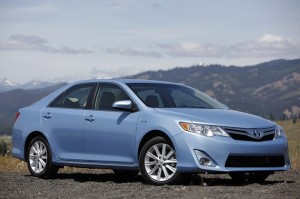
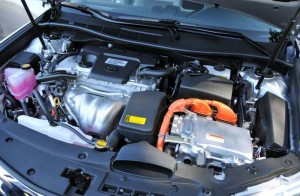
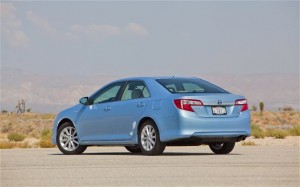
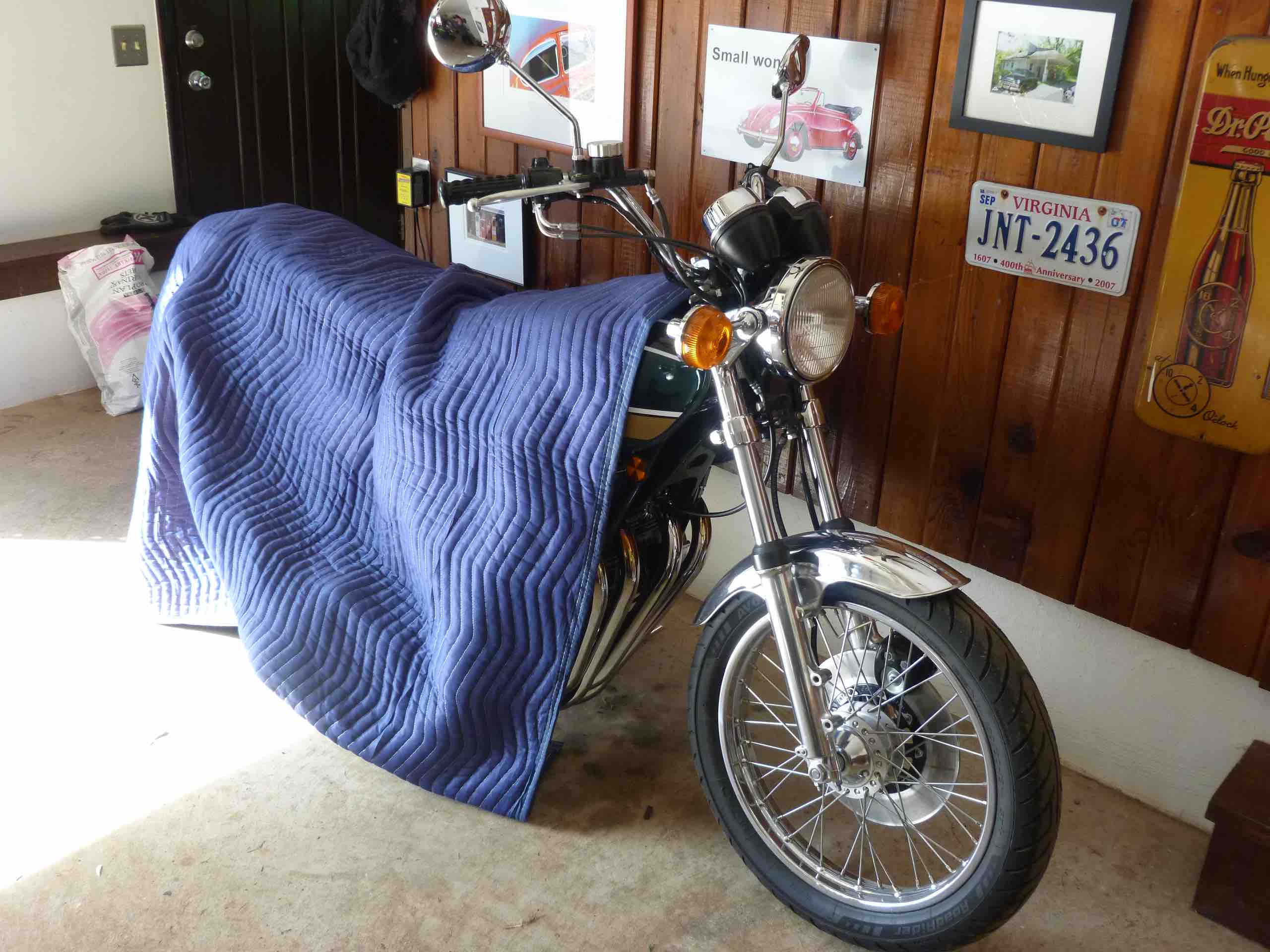






The 2012 Camry Hybrid has a conventional 12 volt battery for starting, and it’s located in the trunk (which is where one would go if using the car to jump someone else.)
It looks to me like the hybrid battery is used to drive the Synergy transmission and the electrical stuff (headlights, blower, ECU, etc.) because just sitting at a light does slowly deplete the hybrid (traction) battery. Given how often the engine restarts, it might be asking a lot of that 12v battery in the trunk if it was responsible for everything as normally in a car. On the other hand, does this mean the headlights et.al. operate at a different voltage? I think the hybrid battery is 20v (but without getting the manual out, I’m not sure.)
Finally someone invented a care that performs well in gridlock.
“car”. That was supposed to be a “car that..”
Good review eric. I like the camry. Good cars in my opinion. Hard choice vs the fusion.
I think hybrids are the way of the future :/
Thanks!
The Fusion’s a nice car, but the price difference between it and the Camry is pretty significant – almost $3k. Given that hybrids are supposed to be about saving money, that would make me lean toward the Camry.
I’m still not sold on hybrids as the best or even a particularly good solution. See point above – cost. Most people don’t have limitless resources, so any technical solution to the problem of fuel efficiency must also be an economical one. A car that gets great gas mileage but which also costs a fortune to buy is a Catch 22 (see the Volt).
A better solution, in my opinion, would be a 2,000 pound car powered by an 80 hp diesel engine driving a CVT. Such a car would probably be capable of at least 50 MPG – probably 60 or more – and should be possible to build for around $18-22k. Provided, of course, it did not have to have six air bags and all the rest of it!
Eric,
Toyota won’t need to install heaters in these beasts because they make their owners (well, rent-to-owners) feel all warm and fuzzy.
Notice I said FEEL, because the idiots that buy these things for the gas mileage aren’t THINKING.
All they hear is GETS 43 MPG.
Not COULD GET 73 MPG IF IT WEIGHED HALF A TON LESS.
Not COSTS $26,000.
Not HOPE THE MECHANICS ARE GENTLEMEN AND BUY YOU DINNER FIRST.
Perfect car for the modern world, Eh?
Yeah – no question.
If it weighed half a ton less, it could get 60-plus MPG without the hybrid drivetrain. A modern diesel would get you there, no sweat.
But of course, then it wouldn’t be “safe” (that is, come through with all the over-the-top crap they come with, in order to comply with over-the-top requirements and also the neurotic obsession many buyers appear to have with “safety,” etc.).
Eric:
What is that vent looking thing on the rear, left seat back?
Also, do hybrids forego a standard battery altogether and simply utilize the big hybrid battery for staring the engine?
It’s a vent/air draw for the battery pack.
Good question on the regular (starting) battery. I’ll go have a look and see. Will report back in a bit!
So, the back seat is tail-friendly? Excellent!
THIS is why I read your articles, Eric. 😉
I try to be entertaining….!